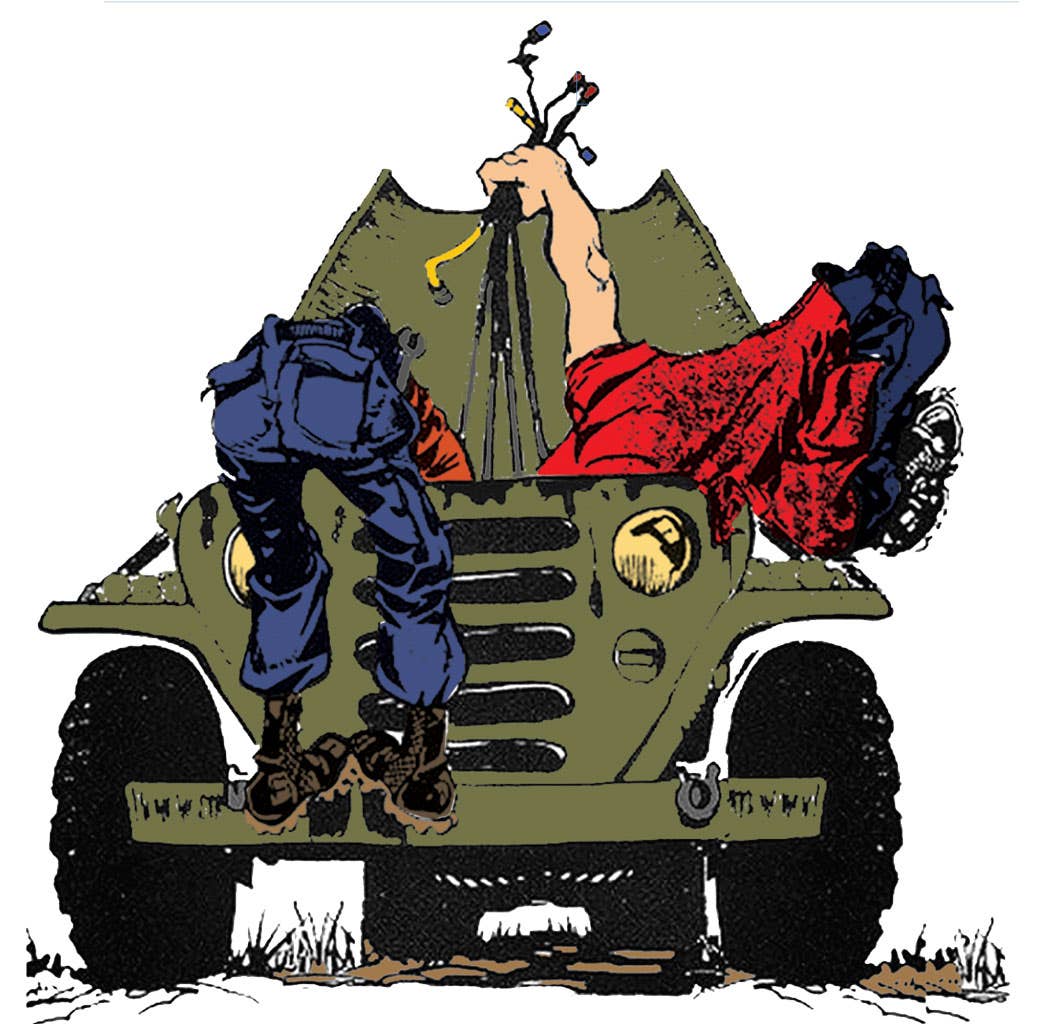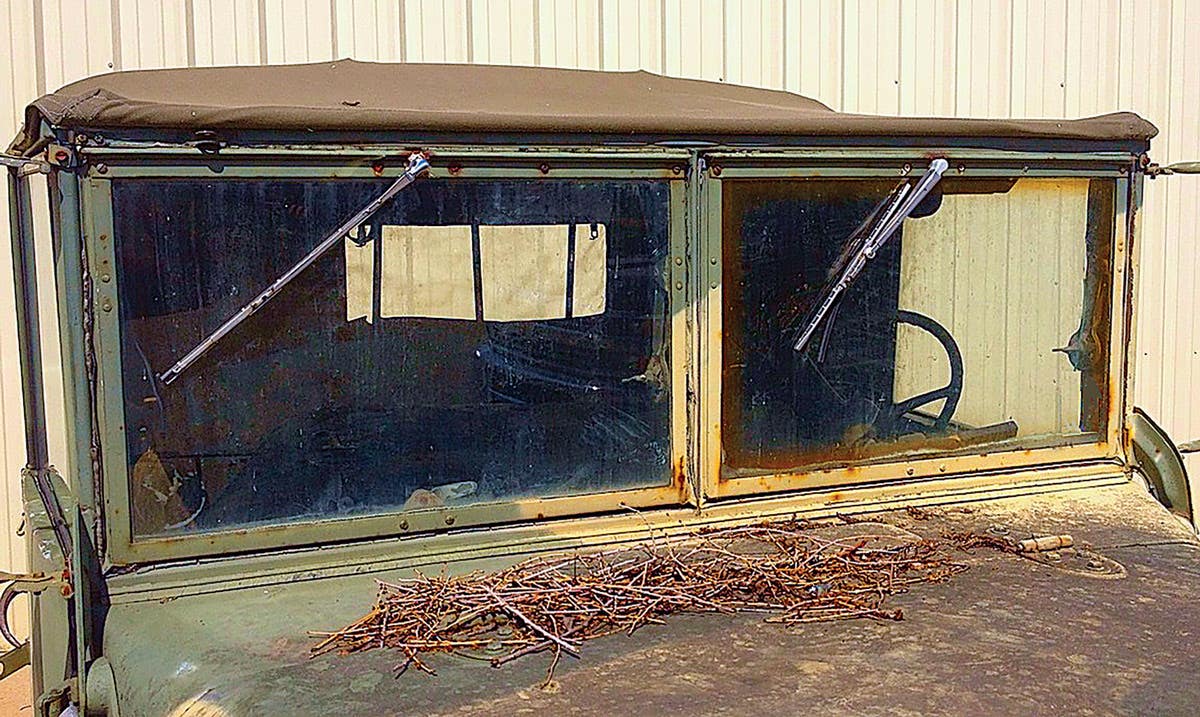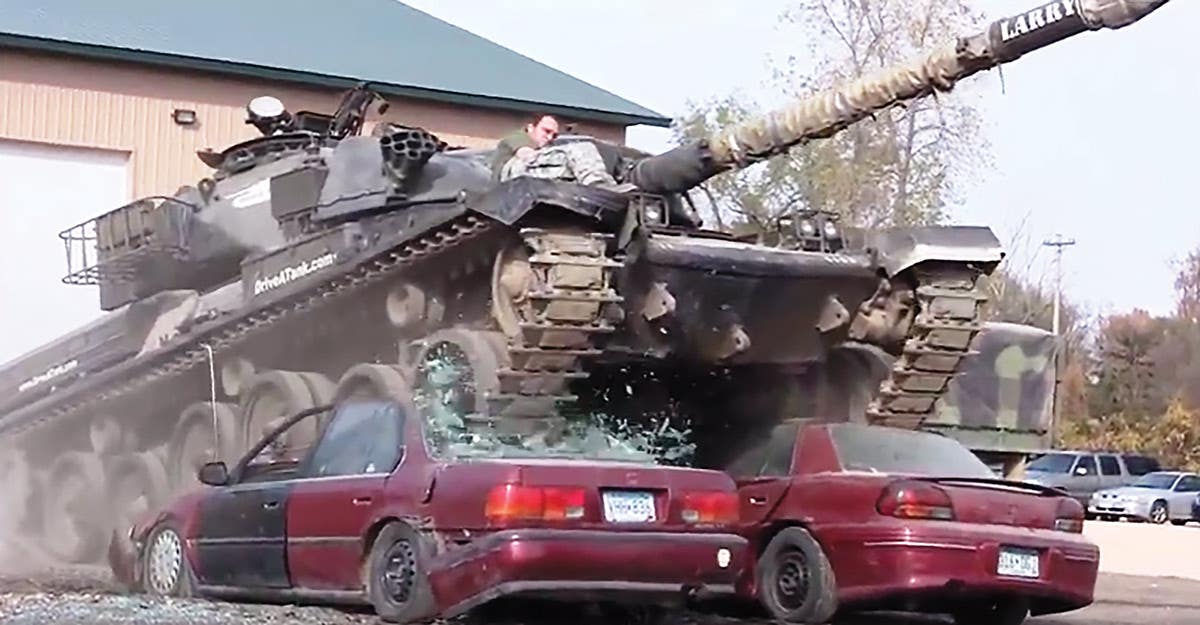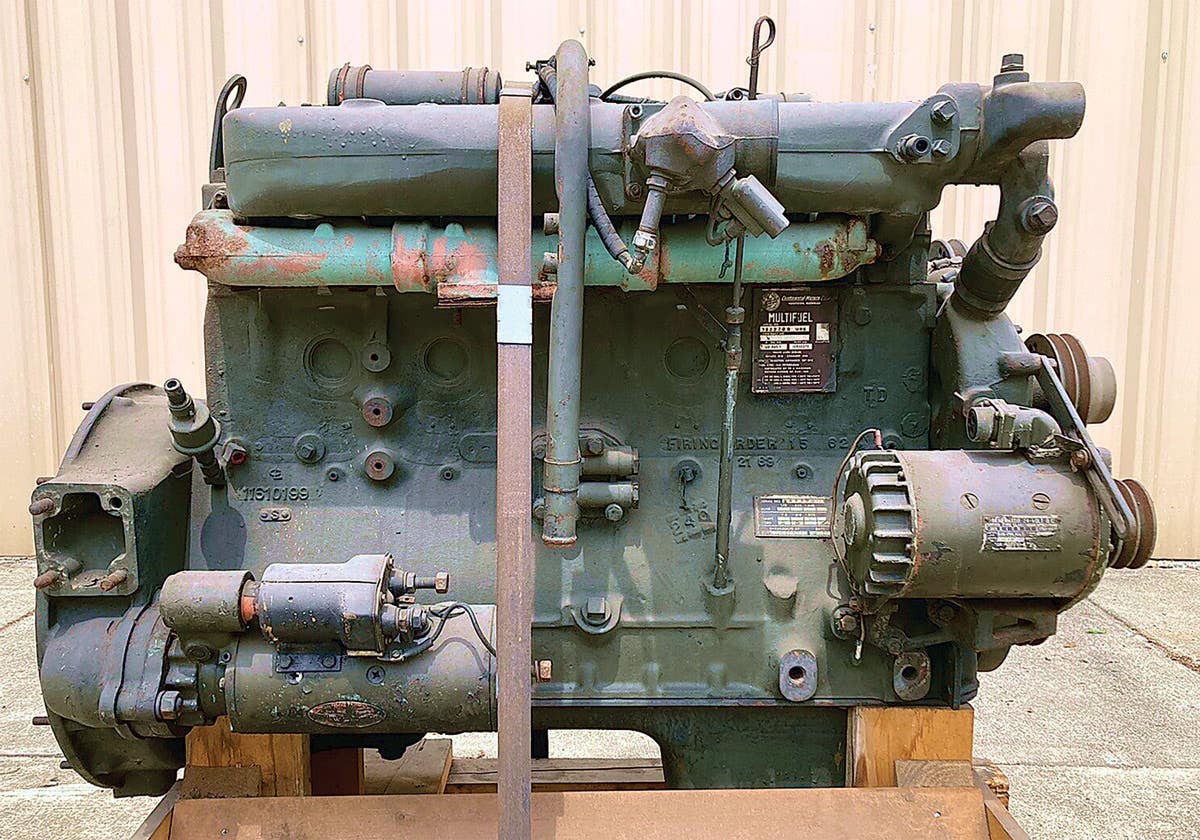Playing With Trains and MVs
Sometimes the best way to take in a showing of military vehicles is to watch the train go by.
By Tom Townsend
As a military vehicle collector I constantly look for new and different things to do with my vehicles. In addition to twenty-five years of conventions, swap meets, convoys, car shows, air shows, and living history displays, I have taken a jeep to Normandy for the fiftieth Anniversary of D-Day and a Japanese tank to the reenactment commemorating the 60th anniversary of Iwo Jima. In a dozen or so movies, I’ve driven everything from gun jeeps to Centurion tanks, but, never once had the opportunity to load an entire train with military vehicles and go somewhere. That has now changed.
My collection, which supports itself primarily by working in film and television, is based only about eight miles from one end of the Texas State Railroad. This 20-mile long tourist line operates passenger trains pulled by vintage steam and diesel locomotives between Rusk and Palestine, Texas. Their trains have also appeared in films such as The Great Debaters, American Outlaws and Rough Riders. Each year they host a number of special events with features ranging from Thomas The Tank Engine to The Lone Ranger. For the past twelve years, the Palestine end has been the sight of an annual Memorial Day Salute to Veterans which includes living history displays, military vehicles, helicopter rides and a mock battle. The idea of assembling a military train for this event was first proposed about eight years ago while the line was still owned and operated by The State Of Texas. Robert Gore, a railroad employee who has headed up the Memorial Day event since its conception, is also an ex-tanker and military collector. Long ago, before military vehicles took over my life, my other hobby was model trains, so neither Robert nor myself had any problem seeing the possibilities, (not to mention the fun) of putting the two together. When first proposed, comments ranged from “that’s a great idea but we could never do anything like that,” and “our insurance won’t cover it,” to “don’t ever mention that again.” This year, operation of the line had been taken over by American Heritage Railroads, a private corporation which also operates two other tourist lines. They found nothing wrong or impossible with the project.
To make it happen, the railroad refurbished three flat cars, two of them ex-military, and a caboose. They built a special loading ramp heavy enough to accommodate my 13 ton artillery tractor and used one of their heavy trailers to move two vehicles which are too big for my own trailers to transport to the rail yard.
When planning a public display such as this, I tend to think of it in much the same way I would layout and coordinate military vehicle movements in a movie scene. The idea is to create an illusion, in this case for a live audience instead of a camera. I had originally thought of this as the recreation of a WW II “armament train;” in other words a short version of the trains which once hauled war machines from the factories to the sea ports of this country. However, since the train’s real purpose would be to honor the veterans of all wars, we felt that vehicles from other eras should also be included. Eventually, seven vehicles and two trailers were chosen to make up our train.
Though the train would be short, I still wanted some illusion of both repetition and length. Armament trains were long and usually carried huge numbers of very similar vehicles. On our train, the first flat car carried two WW II jeeps, a 1942 Willys Slat Grill and a 1942 GPW, both with 1/4 ton trailers attached. The second flat car carried a 1943 WC-51 and an M-5A4 artillery tractor which tended to give the train’s first two thirds a decidedly WW II look, at least to the untrained eye. One trailer was actually a 1947 Bantam T-3, and an M5A4 has Korean War modifications to its ammunition boxes.
The third flat car, which was ten feet longer than the other two carried the only foreign vehicle, a Ferret Mk2/3. Although American collectors often tend to see little historical significance to the ferret, one can argue that it has served with more armies and in more little wars and conflicts around the globe than most other cold war AFVs. It was included on this train for two reasons, its cute and crowds love it. Also on the third flat car was a CCKW 353, and a gloss strata blue M43 air force ambulance. One of the most difficult aspects of creating a good visual display of military vehicles is Olive Drab paint. It does exactly what it was designed to do, and makes vehicles disappear, so the bright colors of an ambulance, and even the ferret’s semi-gloss Olive Drab become focal points to both the camera and human eye.
After years of collecting, I finally got to use that chapter in the back of every vehicle’s technical manual which covers the loading and securing of vehicles for rail transport. The United States Army in World War II probably loaded seven vehicles and two trailers in an hour or so. We took almost three days.
Since the railroad has no loading docks capable of supporting armored vehicles, a special ramp was built at the end of a spur so that each vehicle could be driven straight onto its flat car. This actually made loading easier than driving on from a loading dock at an angle and turning to center up on the car. After each car was loaded, it would be switched them onto another track and the next car moved into position.
A lot of the time was taken up with the M-5A4 which proved too wide for the first two trailers and barely made it onto the third with about two inches of each twelve inch track hanging over. Any vehicle which is ten foot, eight inches wide and has twelve inch, all steel tracks is a challenge to load onto anything. Steel tracks tend to slip on steel surfaces and with virtually no margin for error, the slightest bumping of a steering clutch can result in instant disaster. Pieces of rebar were welded across the ramp for traction and they reduced most of the slippage. Even once the M5A4 was on the flat car there was still some overhang. All the other vehicles climbed the ramp and loaded without incident.
Wooden chocks were built to the TM specifications by the railroad shops and screwed into the flat cars, then all vehicles were secured by four heavy chains and boomers. Much of this seemed like overkill at first, but after riding a vehicle while the train was being switched, one comes to appreciate the heavy jolts which occur whenever the brakes are applied and the slack between the cars creates a sort of increasing ripple effect down the train which is much stronger than anything a vehicle gets while on a trailer. Needless to say, windshields need to be down and locked, gun tubes in trail lock, all breaks set, and transmissions left in low range.
The locomotive used to pull our train also qualifies as an antique military vehicle. It is an ex-military 249F diesel road switcher, built in 1952 by American Locomotive Works. Early Friday morning, it pulled out of the Rusk yards leading the three loaded flat cars and a vintage caboose from the same period. We made a short stop at the depot for a photo op and to pick up the railroad’s owner, Al Harper, who had flown in from Colorado to make the trip. Also aboard were a couple of city mayors, economic development and chamber of commerce representatives, and other assorted VIPs who filled the caboose. I rode with them until the first stop at the town of Maydell, and then climbed into the M5’s anti-aircraft mount for the rest of the trip.
The real important thing, to me, about military vehicle collecting is making memories, the “time trip” kind that stay with you forever and remind you why you work so hard and spend so much money to do this. I have them from the Normandy Coast, and from driving a Centurion through movie pyrotechnics in “Courage Under Fire.” I have them from watching dawn break from the cab of my CCKW in the Louisiana swamps while shooting the movie “Warbirds,” and, in another movie, driving a ferret into a wire-guided anti-tank missile. I definitely have some new ones from riding a train loaded with military vehicles as it wound its way through the forests and fields of East Texas.
At the end of the two hour run, we arrived at Palestine on schedule and our train went onto a siding where it became a backdrop for the weekend’s living history displays. Late Sunday evening we returned to the Rusk yard and began unloading on Monday morning.
It appears at this time that the train was a success and will be repeated next year. Plans for improvement include adding another flat car or two, removing the caboose and restoring a passenger coach in military colors in which reenactors will ride to recreate a WW II troop train. Scheduling next year will hopefully allow the train to move during the weekend, so it will pass and be more visible to the regular passenger trains. We are also considering including vehicles belonging to other collectors. I’m not sure how much interest there would be in this, since almost two weeks were involved from loading to unloading and the vehicles are out in the weather during the whole time; but we are open to suggestions. Whatever happens in the future, it remains an experience which ranks high in my military vehicle collecting book of memories.







